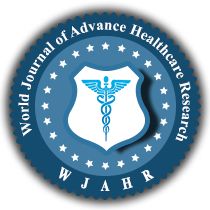| All | Since 2020 | |
| Citation | 105 | 60 |
| h-index | 4 | 4 |
| i10-index | 3 | 2 |
WJAHR Citation 
Login
News & Updation
Best Article Awards
World Journal of Advance Healthcare Research (WJAHR) is giving Best Article Award in every Issue for Best Article and Issue Certificate of Appreciation to the Authors to promote research activity of scholar.
Best Article of current issue
Download Article : Click here
Indexing
Abstract
THE PREVALENCE OF IRON DEFICIENCY ANEMIA IN CHILDREN BETWEEN 5 MOANTHS TO 6 YEARS WITH FEBRILE CONVULSION
Dr. Yasir Abdulelah Mahmood
ABSTRACT
Background: The most prevalent form of seizure in children is febrile seizures. Several researches have looked at the link between iron deficient anemia and febrile seizures, with inconsistent findings. Iron deficiency anemia is a risk factor for febrile seizures, as iron has a crucial role in neurological development and function. Objectives: To determine the relationship between iron deficiency anemia and febrile seizure in children between 6 months to 6 years of age. Patients and methods: This prospective case-control study was carried out on children who visited the Al Salam Teaching Hospital's emergency room and outpatient clinics between October 2024 to April 2025 and were between the ages of five months and six years. Children were divided into two categories: case and control groups. The case group contained 80 patients (children with febrile convulsions), whereas the control group included 40 children (children without febrile convulsions). Hemoglobin (Hb), hematocrit, mean corpuscular volume, mean corpuscular Hb, mean corpuscular Hb concentration, serum iron, serum ferritin, total iron-binding capacity, and transferring saturation were measured in both groups. Children with atypical febrile seizures, signs of central nervous system infection, chronic neurodevelopment problems, previous diagnoses of other hematologic problems, bleeding or coagulation disorders, hematologic malignancy, iron supplementation, gastroenteritis, and very sick children were excluded from the study. Results: In this study, children with FS had higher rates of IDA, and this difference was statistically significant (P value < 0.05). There is no statistically significant difference between the two groups in terms of red blood cell (RBC) count in millions, MCHC. However, the case group showed significantly lower levels of Hb, MCV, Hct, and MCH compared to the control group (P value < 0.05). Additionally; there was a significant difference between the groups in terms of SI, TIBC, SF, and transferrin saturation (P-value < 0.05). Conclusion: Iron deficiency may have a significant risk factor for febrile convulsions. Iron status testing is suggested in children with FS. Early identification and treatment of iron deficiency may help avoid febrile seizures in children of this age range.
[Full Text Article] [Download Certificate]
